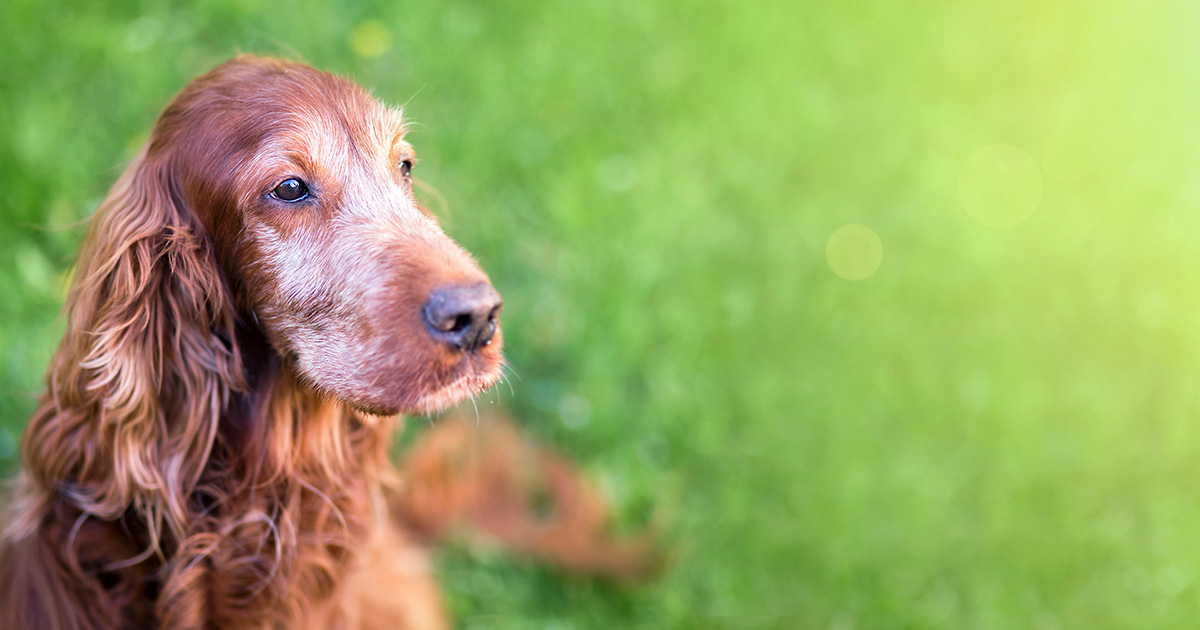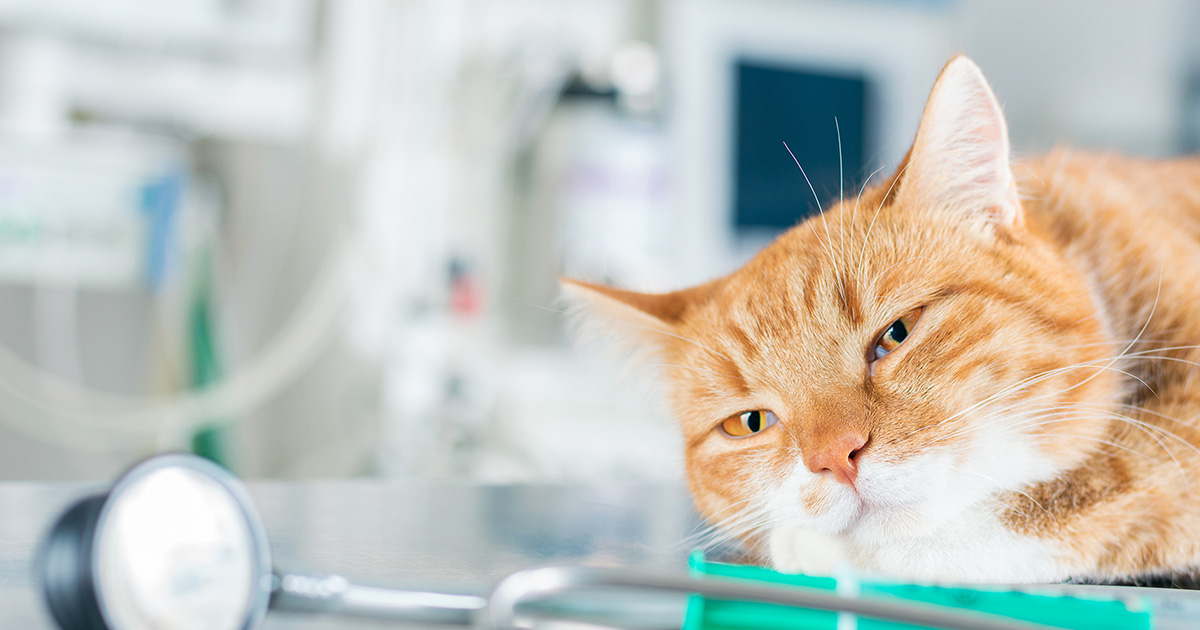19 Sept 2023
Fergal McDermott ponders the way vets think about this procedure and what it means to them.

Image © gustavofrazao / Adobe Stock
Like many people, one of the major contributors towards me pursuing a career in veterinary was a childhood pet.
Molly was a black Labrador-retriever springer spaniel cross. She was a beautiful dog and although she wasn’t very obedient, I didn’t care because we had so much love for each other.
She was alive from when I was 7 until 21 and when I reflect on our relationship, she played a very maternal role in my youth. As many will know, when having a pet for that long it is natural to reflect on their death towards the end of their life. You know the end will come and when they’re napping, you check to see if they’re still breathing, half hoping they’re not, so their departure is a smooth one. When the day did arrive, Molly’s euthanasia was a very significant moment in my life. I still remember it so well, such raw emotions of the whole family crying, and the drama of digging her grave in the darkness and the driving rain.
A vet student at the time, a few months later I did work experience in the clinic where the euthanasia happened. I met the vet who had euthanised Molly and I asked her about it and was struck by how unaffected by it all she was. What was hugely traumatic for me, for her, was a non-event, half forgotten. I was shocked by how neutral she was and promised myself that I would never turn out this way.
As a vet student, I used to fantasise about times when I would save lives, times when I could say that a creature roams this earth still because of me and me alone. The reality is that these ego wins rarely occur and mostly you should rejoice in the shared wins of a team effort.
Now, nearly 10 years and thousands of semi-forgotten euthanasias later, I identify more with the vet who euthanised Molly than my former self and find myself reflecting on the lives that could still be walking the earth if it wasn’t for me?
During the lockdown, I shared an old house in Liège with three vet students, two dogs, briefly chickens and hundreds of fruit flies. At the time, I found an extremely effective fly trap recipe online involving a glass of sweet water.
Using this recipe again this summer, I found myself reflecting on euthanasia and how strange this aspect of our jobs is. Watching these poor little creatures slowly sink to join their mass grave made me wonder – why is it that this recipe is readily available online, but if somebody posted a recipe involving drowning hundreds of puppies, people would be rightly outraged?

Most religions and general life advice sources have a fairly concrete anti-taking life stance, yet in veterinary medicine, we take lives on a large scale. Why is it that everyone in the veterinary sector is not walking around with overwhelming guilt, haunted by all the ghosts they have created? Do veterinarians get a free pass? I find the grey areas around euthanasia intriguing and I do not claim to have the answers, perhaps more questions.
The first major question is why is it okay for us to care about the lives of some animals and not others? The answer is probably money related. It may be considered wrong to euthanise a stray cat brought into your clinic with a broken leg, but it is common practice to reach straight for the pentobarbital if it is instead a wild bird or rabbit.
Somebody could adopt the cat, but few are going to pay for orthopaedic surgery on a wild hedgehog. That can be a strange feeling – taking a life that didn’t truly need to be taken.
In an alternate universe, humans could value geese or hares more, and this animal could have been saved. But it is how it is and what choice is there? You do nothing and the animal suffers, the bone will likely never heal and it may never live a normal life again. To turn it out to the wild again will likely only prolong the suffering.
We have a moral responsibility to relieve suffering and this allows us to euthanise without too heavy a conscience. It can be quite jarring to encounter client-owned, typically wild animals.
I recently splinted a duck with a broken leg and the owner was disgusted with me when I proposed euthanasia as a possible alternative. What about client-owned pets? Nobody would question euthanising a 10-year-old paralysed dog with intervertebral disc disease. What about euthanising a six-month-old cat with complex metatarsal fractures if the surgery is too expensive and the owner does not want a three-legged cat?
As a veterinarian, you will be exposed to infinite variations of these dilemmas and my approach is to try to act to as ethically level as possible. But is this enough?
Some of these animals could be saved. The owner could forfeit ownership and you could try to look for new owners or charities willing to take these animals and pay their medical bills. If you’ve ever tried this, you’ll know it is a lot of work and hassle – and, in most cases, we don’t bother. What are the ethics involved with taking a life you are not bothered to save? Also, is this the correct thing to do? Shelters remain with lots of healthy dogs and cats looking for owners, which may be euthanised if unadopted.
What about when the costs are too high? As professionals we must be paid, but what are the ethics of killing an animal that we could have saved if we asked for a little less? How much less? What price do we put on these lives?
Although I do not believe a fixed number exists, I believe if you were to investigate euthanasia rates compared to varying costs, interesting results would occur. I believe that above and below a certain treatment cost threshold, owners would be more or less likely to euthanise. It could be argued that lowering the cost of pet insurance could indirectly save thousands of lives. As veterinarians, saving as many lives as possible is our goal, isn’t it?
When it comes to euthanising based on perceptions of quality of life, both vet and owners’ perceptions are relevant. As vets, we can influence the owners’ perception of quality of life. I believe studies could identify which symptoms and factors play the most important roles in owners’ perceptions.
Consider an owner who comes in with a 15-year-old cat that is intermittently vomiting and not eating. If you prescribe mirtazapine, the owner may be happy and ignore the vomiting because the cat is eating. If you prescribe maropitant, maybe the cat is euthanised because it never regains its appetite.

Not all vets agree on an animal’s quality of life. Depending on whereabouts in the world you take your animal to the vet or what sort of vet they are may influence whether it lives or dies, and I believe this is also potentially quantifiable.
As a veterinarian, pushing an owner towards euthanasia definitely influences their decision, but vets are only humans and we make mistakes.
When I first began my career I believed dyspnoeic cats in congestive heart failure had a 100 per cent mortality rate. Due to fear of the unknown or ignorance, I convinced many owners of pets in this condition to euthanise them. Now I know that a number of these patients respond quite well to furosemide, I can’t help but wonder how many lives are taken by veterinarians’ lack of experience or knowledge?
In the Netherlands, human euthanasia is legal and I once met a psychiatrist who performed just one in her lengthy career. It was an intense legal process; dozens of consent forms had to be signed, the local police had to be pre-informed, other doctors had to be present and it was an emotional experience, for which she was provided counselling. I compare it to veterinary and wonder why the line is drawn at humans? What makes human life so unique that we are expected to take the lives of everything else without much thought for the toll it takes on us?
It can be quite unsettling to notice how quickly you become desensitised to euthanasia. Obviously, desensitisation is key to longevity in this career, but most owners would find it shocking if they were privy to what goes through a vet’s mind at the time of their pets’ euthanasia.
As vets, you do it so frequently that you don’t feel you are taking a life – you are merely injecting a liquid. I sometimes wonder if I would feel differently if it was a human on the end of the needle, and luckily I will never find out. It is hard to describe the feeling experienced during a euthanasia and it is often intense, but inaccessible.
While you can empathise with the grieving family, duty calls and you are there to do a job, and the priority is a successful euthanasia.
For me, a successful euthanasia is one in which I am almost invisible. Nobody wants their last memories of their pet to revolve around the vet at the time it died, because that probably means something went wrong. I often feel most emotional when I step into the hall afterwards – a moment of personal silence with the family crying next door.
I recently euthanised my cat, Nemo, and although the act itself was familiar, I was grateful for the grief that I felt over his loss and the insight I obtained into the experiences of an owner.
As veterinarians, we have undertaken a noble responsibility to ease the suffering in the lives of animals. However routine, I consider euthanasia to be a sacred act – one I will continue to reflect on for the rest of my career. I strongly encourage you all to do so, too.